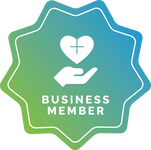Meet One of The Most High-Functioning, Financially Sustainable Nonprofit Organizations We Know: STARability FoundationPage 5 is a must read! A step-by-step financial transformation timeline (blueprint) of how STARability grew their organization and achieved true sustainability. As most of you know, I like to joke that I'm a recovering nonprofit executive director. I was an ED at the tail end of the Great Recession, and fundraising was still one of the toughest jobs out there. Funders everywhere were talking about nonprofit sustainability, earned revenue models, and diversified revenue streams. I became fascinated with the concept personally and professionally. Is it possible? Or is it just a pipe dream? Fast forward 10 years and I can tell you with certainty: nonprofit sustainability is not a unicorn. There's a process, cycle, and science to it, and we help our clients move in that direction every day. Take a few minutes to read our first ever case study about our amazing client the STARability Foundation and see how their sustainability story unfolded over the last 5 years. And discover the steps that you can take to move your organization toward a more secure future, even in uncertain times. With you, Chantal Sheehan A Note From our Founder & CEO:
0 Comments
Sometimes budgets can feel like necessary evils instead of tools (how we think of them). Even scarier is creating a budget for 2021 after 2020’s dumpster fire of a year. Everything is uncertain. So, how can you plan for the future? Our CEO at Blue Fox recently spoke on this topic at Nonprofit Hub’s Cause Camp conference in October. [Video clip below] Here are some small steps to take to create a meaningful budget. 1. Get 2020 financials up-to-date Scrub your data in Quickbooks or in your accounting files and make sure you have accurate data on the books. Having accurate reports is the foundation for good budget planning, which leads us into step #2. 2. Do some math Use our Magical Nonprofit Financial Ratio Matrix to assess your organization’s financial health. This tool will provide you vital information to assist in your budgeting process. Remember: information is NOT insight. Information is data that requires analysis. And, through analysis, your organization can generate insight and inform strategic budget decisions. 3. Review your budget v. actual for 2020 carefully WITH your team Bringing your team into this step of the process is extremely valuable. A lot of times small organizations develop their budget in a vacuum. That makes no sense because your team is your single greatest asset. Your team is your mission. They have their ear to the ground and know exactly what’s happening in their respective department. 4. Determine reasonable assumptions for 2021 You have more information and insight than you probably think! Take the data that you have then make your assumptions as broad as you can. 5. Evaluate the key drives/levers of revenue and expenses What factors ramp up or ramp down revenue? What are the expenses that are key to keeping your organization afloat or on target? 6. Think about long-term vs. short-term needs; the short-term focus is OK right now Right now a short-term focus is OK. When you look at your budget, 12 months is plenty. you don’t have to forecast beyond that right now. For a lot of our clients this year, things have changed month-to-month, even day-to-day. Don’t worry so much to project your long-term budget just focus on the next 12 months. Some of our clients are currently reviewing their budget every month. They are not formally changing it but having conversations with their finance committee about what’s happening day-to-day and month-to-month. That way they have a really keen understanding of levers and drivers of their financial sustainability. And, they can proactively find solutions to challenges that pop up. 7. Determine decision-making budget moments in 2021 Scenario planning is key! Decision-making moments are preset moments in times, activities, in regard to revenue or expense metrics at which you will make a certain decision. Say you have an annual signature event but because of COVID, this annual event is now held virtually. How are you supposed to know how much money the event will raise now that it’s not in-person? You don’t! You can just hope and guess. What will you do if revenue is significantly lower? What if your expenses change? It’s impossible to predict what’s going to happen in 2021. That’s why having preset triggers set in your budget will help your leadership team make decisions as the year unfolds. More Budget Pro Tips:
Budgeting for a shortfall This might sound like a radical and crazy idea coming from an accounting firm but consider budgeting for 2021 to be in the red. Say whaaaaat? Think about it: Everything is unknowable. Revenue targets are going to shift. Expenses could go up or way down. You’re going to build a budget that’s the best idea from the information you have right now. But why build a budget that has overly rosey revenue predictions just so you can say it’s balanced? Don’t do that to your organization. Plan with the caveat that if you have cash and the financial runway to do so go ahead and plan for some shortfall. We are currently advising clients right now that no more than 15% of your budget should be in the red. Nonprofits do not need to have a balanced budget under these circumstances, assuming you have the cash to sustain your position through that shortfall for the next year. Looking to dive deeper into planning your 2021 budget? Our friendly team at Blue Fox is here to help! Give us a call at (321) 233-3311 or email. We’ll get you sorted! Then you can focus on what really matters: your mission and serving your community. You can also schedule a free budget consultation: https://calendly.com/chat-with-chantal As if this year hasn’t been crazy enough, navigating through the Paycheck Protection Program (PPP) is also an eyebrow raiser. The big question lately is when to submit the loan forgiveness forms (3508, 3508EZ, and 3508S)? If you’re fearful that you might miss the 11/30/2020 deadline–which is displayed in the upper-right corner of the forms–don’t worry, we have good news for you!
The U.S. Small Business Administration (SBA) recently released a new entry in the loan forgiveness FAQs document addressing, “Is November 30, 2020 the deadline for borrowers to apply for forgiveness?” The answer is no. Borrowers can submit a loan forgiveness application any time before the maturity date of the loan, which is either two or five years from the loan origination. If you’re like me and wondering, “Well then why the heck is that date printed on the loan?” The reason for the expiration date in the upper-right corner is for the SBA’s compliance with the Paperwork Reduction Act and it reflects the temporary expiration date for approved use of the forms. Here’s another insider tip: the accounting lobby is currently advising businesses and nonprofits to WAIT to submit their loan forgiveness applications until Congress takes up a bill called the Paycheck Protection Small Business Forgiveness Act. This bill would create an easy, almost ‘automatic’ form for loan forgiveness for loans under $150,000. Now wouldn’t that be nice?! So if your PPP loan was less than $150,000, we recommend you sit tight until this bill is addressed by Congress. To read more helpful FAQ on PPP from the SBA, check it out here. As always, our team is happy to answer questions and help your organization navigate current financial challenges. Give us a call at (321) 233-3311 or email [email protected]. Remind Donors of the CARES Act Tax Deductions for Charitable Giving Giving season is upon us, and nonprofits and social impact organizations have been running lean and nimble amid the Coronavirus pandemic. While annual in-person events have switched to virtual and the outcome of giving season seems unknown and frightening, there is always light at the end of the tunnel. Here is our glass half-full perspective on increasing giving this year: Most donors plan to maintain, or even increase, the amount they donate to charity this year. According to Fidelity Charitable, 25% of donors plan to increase their donations and 54% of donors plan to maintain their giving levels. Younger generations are also upping their giving with 46% of Millennials say they will give more in response to the pandemic. The Coronavirus Aid, Relief and Economic Security (CARES) Act, which includes provisions that are designed to foster charitable giving activities and advance nonprofits’ missions, could incentivize people to give more. Take the time to inform donors about the CARES Act Tax deduction and see if it boosts your giving season results! Here are the deets: Electing individuals who itemize deductions on their personal income tax return (including couples filing a joint return) can deduct qualified cash charitable donations up to 100% of their adjusted gross income (AGI) for tax year 2020.. Under previous law, such contribution deductions were limited to 60% of AGI. That means itemizers can fully deduct their charitable cash contributions this year. Winning! Hopefully this will be a boon to the nonprofit sector and organizations will see a boost in charitable giving. How much do individuals need to give in order to benefit if they want to itemize? For folks who don’t itemize, there’s also a new incentive to give in 2020. If you take the standard deduction on your 2020 tax return (the one that you'll file in 2021), you can claim a brand new "above-the-line" deduction of up to $300 for cash donations to charity.
Be aware, donations to donor advised funds and certain other types of organizations that support charities are not deductible. Also be aware that this deduction is only for those who do NOT itemize (no double dipping, folks). Need help with your tax planning? Have questions on how to frame this for your nonprofit’s donors? Our friendly team at Blue Fox is here to help! Give us a call at (321) 233-3311 or email. We’ll get you sorted! |
Our BlogWelcome to the Blue Fox Blog! A fairly entertaining source of info and news related to our company, nonprofits, social sector trends, and, of course, accounting. Enjoy! Top ArticlesBack to Basics: How to Set Up Your Nonprofit Chart of Accounts
How "Small" Payroll Mistakes Cause Multi-Year S#!t Storms for Nonprofits Behind the Scenes, New Client Onboarding Call When to Hire a Tax Professional - 10 Factors to Consider 40+ Ideas to Light a Fundraising Fire Under Your Nonprofit Board Members Why Outsource Your Nonprofit Accounting to Blue Fox? Ask One of Our Newest Clients Client CASE STUDY: One of The Most Financially Sustainable Nonprofit Orgs We Know The Magical Nonprofit Financial Ratio Matrix 10 Reasons to Outsource Your Nonprofit Accounting How to Make Your Nonprofit Recession-Proof How to Engage Your Board of Directors in Financial Conversations QB Tip of the Month: How to Use Classes for Painless Grant Writing When to Hire an Accountant for Your Social Impact Org Are You Paying Too Much for Payroll? Company NewsBlue Fox Teams Up With Bloomerang to Develop Nonprofit Resources
Blue Fox Earns Better Business Bureau Accreditation Blue Fox Launches Protected By Logo Blue Fox - The Origin Story Categories
All
Archives
July 2024
|
BLUE FOX
Phone: (321) 233-3311, Email: [email protected]
Mailing Address: 2542 Woodfield Circle, Melbourne, FL 32904
Copyright © 2024 - All Rights Reserved
Holiday office closures: To give our employees time to unplug and refresh with their family and friends, the Blue Fox virtual office closes
for all federal holidays, the week of Thanksgiving, and the week between Christmas and New Year's Day.
Phone: (321) 233-3311, Email: [email protected]
Mailing Address: 2542 Woodfield Circle, Melbourne, FL 32904
Copyright © 2024 - All Rights Reserved
Holiday office closures: To give our employees time to unplug and refresh with their family and friends, the Blue Fox virtual office closes
for all federal holidays, the week of Thanksgiving, and the week between Christmas and New Year's Day.







 RSS Feed
RSS Feed









